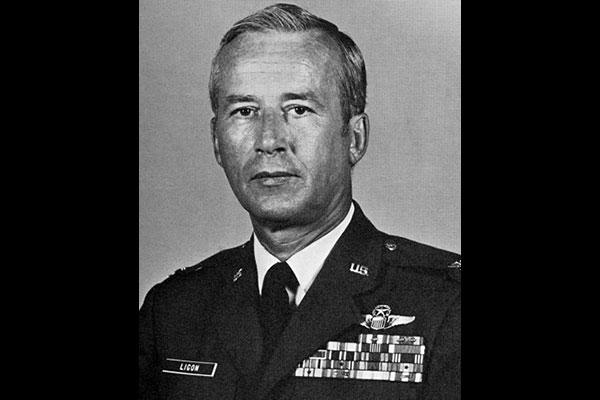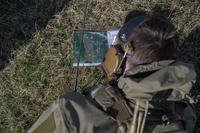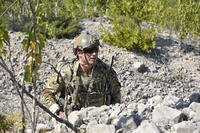Between Memorial Day and Veteran's Day lies a lesser-known but no less important commemoration. POW/MIA Day, Sept. 15, is a day for remembering the men and women who, like Air Force Col. Vernon P. Ligon Jr., have suffered at the hands of a wartime enemy. All too often, those who become prisoners of war or who are reported missing in action never come home. But Ligon survived captivity and returned -- not only once, but three times from three separate wars.
Ligon was born, raised, and educated in Kentucky and began his military career in March 1942 with the Army Air Corps. During his assignment as a P-47 fighter pilot with the 362nd Fighter Group, he was shot down over Brussels after 35 missions. Ligon was captured and interned in several different German prison camps, including the notorious Stalagluft III. During a forced march, he escaped but was recaptured and taken to a camp near Mosseburg. He was finally released in April 1945.
Rather than making him quit, Ligon's World War II POW experience made him even more determined to continue fighting oppression. In 1950, he returned to Air Force duty as a logistics officer at Clark Air Base in the Philippines. Edward MacLean, a pilot who had served with Ligon during World War II, told Air Force Heritage magazine that, while flying missions in the Korean War, Ligon was incarcerated for a short time in a North Korean POW camp.
Several assignments and another decade later, Ligon was back in the cockpit and assigned to Udorn, Thailand, as commander of the 11th Tactical Reconnaissance Squadron. After 26 missions, he was shot down by a SAM missile while flying over Hanoi and taken to the infamous "Hanoi Hilton," where he endured five and a half years of imprisonment.
"My experiences while interned [in Vietnam] are typical of those of my fellow Americans," Ligon told the authors of "We Came Home" in 1977. While this quiet statement reminds us of the cruelties endured by all the POWs, it does not reveal that Ligon, as one of the highest-ranking and the oldest of the American servicemen held there, was kept separated from his comrades. He spent over four and a half years in isolation. Ligon was released in March 1973, retiring from the Air Force a few years later. He died in 1995.
On POW/MIA Day, it's worth remembering something else Ligon said in his "We Came Home" interview: "There is one thing that will always stand out very vividly in my memory ... the reception that approximately 3,000 wonderful, loyal friends and Americans gave us returnees ... it reaffirmed [our] feelings that the greater part of the American public is patriotic and [cares] about their families, country, and servicemen."















